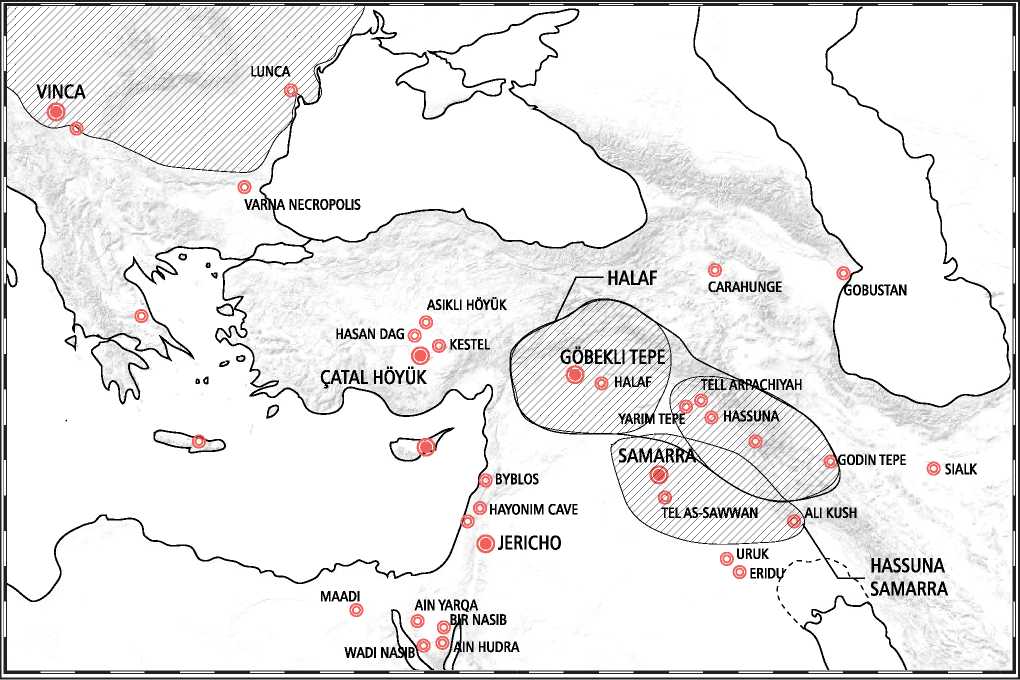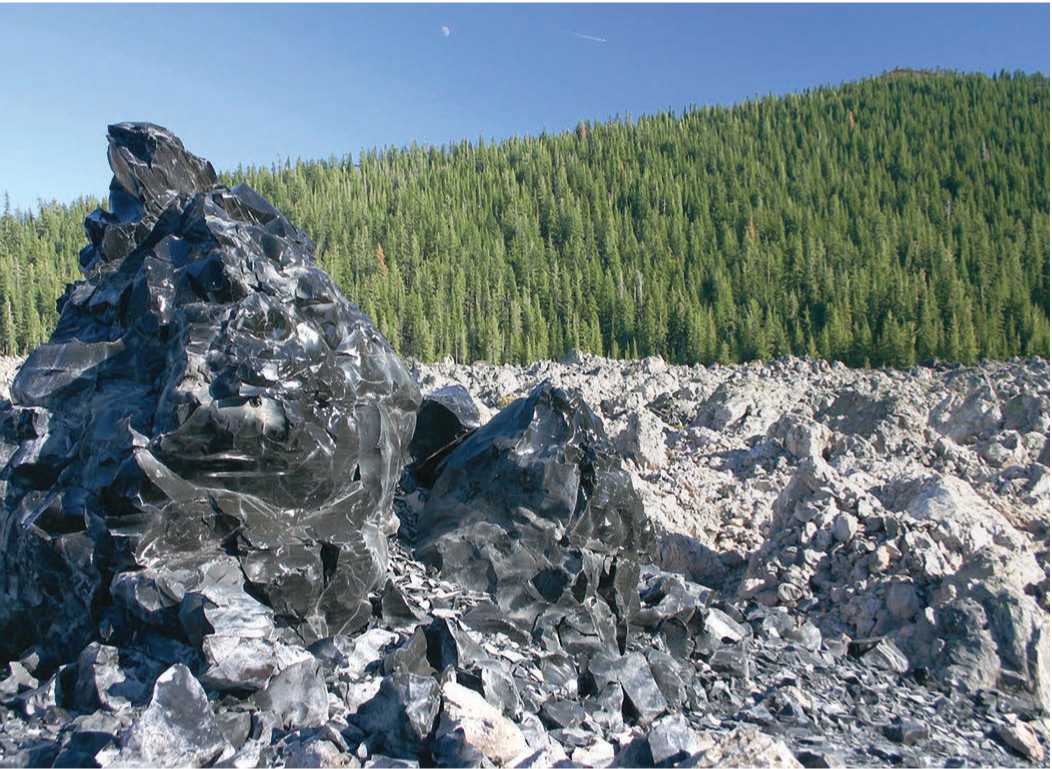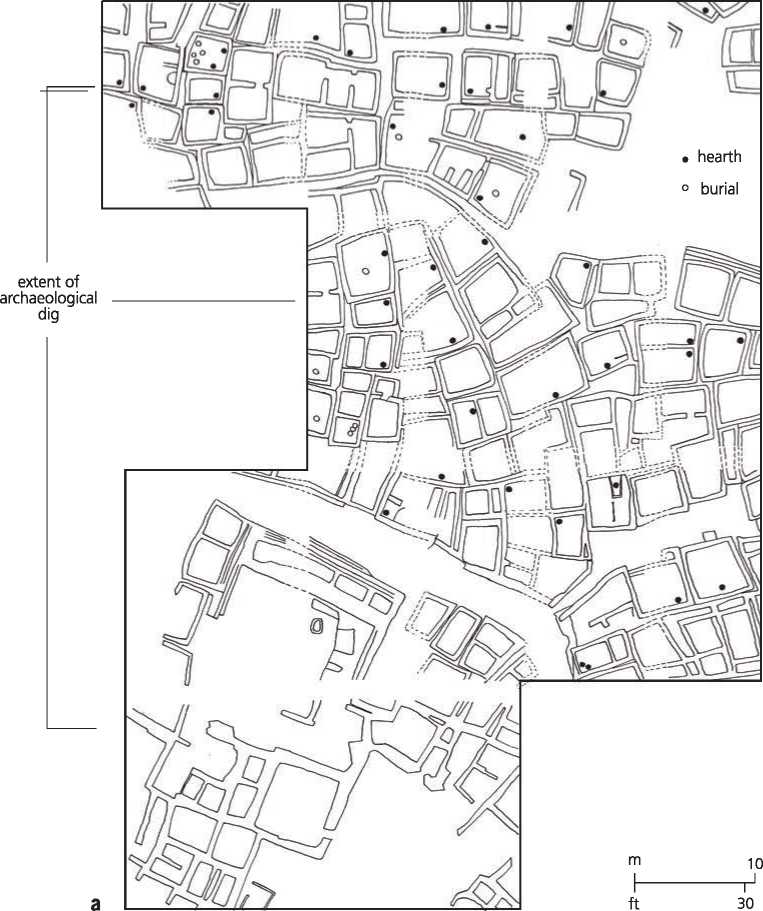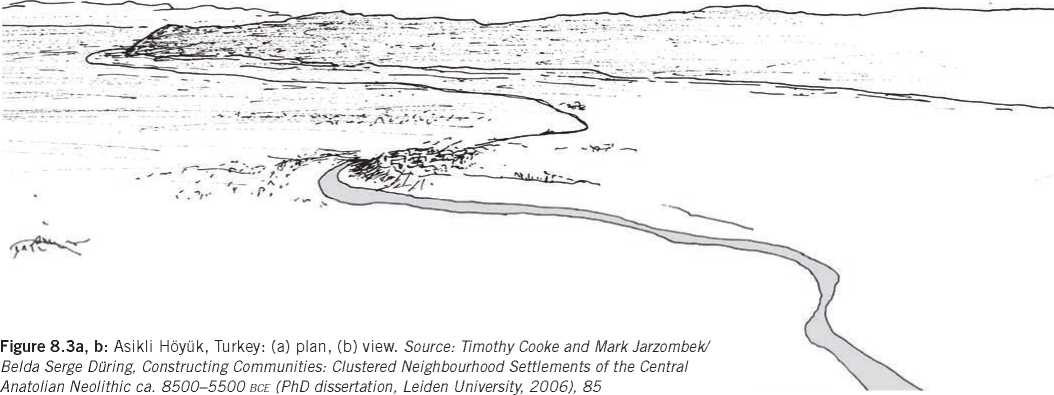Obsidian is formed when silica-rich magma from a volcano or a volcanic vent cools quickly—as perhaps under water—so that little or no crystallization occurs. It appears as blobs of shiny, black glass. The name originates from the Greek word opsi (“appearance”), possibly because it was used in the eyes of figurines, which were viewed as symbolical mirrors of the world. Ancient sources also referred to obsidian’s medico-magical use to cure eye diseases or enable the seer to gaze into the future; others were convinced that it brought luck to sea travelers1 (Figures 8.1 and 8.2).

Figure 8.1: West Asia early cities, 9000-5000 bce. Source: Florence Guiraud

Figure 8.2: Obsidian outcrop, California, USA. Source: Beej Jorgensen
Obsidian can be compared to jade in China, since both stones were held to have magical properties, but obsidian had a secondary feature, namely that with careful preparation and chipping it produces a sharp blade, sharper even than many modern steel blades. Obsidian was well known to First Society people, who valued its shiny surfaces and used it for spear points. It was, therefore, only a matter of time, around 8000 bce, in fact, that obsidian blades were placed in sickles, thus greatly accelerating the harvesting of grain. Some of the main sites for obsidian were in Armenia and in southern Anatolia, near Qatal Hoyuk at Ciftlik, and near the present town of Nigde in Turkey, and, finally, on the Mediterranean island of Lipari. Obsidian from these places had a huge impact on the nascent agro-pastoral world since it produced a clear asymmetry between the haves and the have nots.
38 20 57 N, 34 13 47 E
The settlement Asikli Hoyuk in Turkey, near an obsidian source, was a place where the material was worked into blades for trade purposes2 (Figure 8.3a, 8.3b). The layout of the village consisted of densely packed rectangular houses sited on a blufi' over a bend in the Melendiz River. The mud-brick buildings had no foundations, but the floors were finely paved with pebbles. There were no doors to the houses. Entry was from the roof. The roof was an important platform for work and other social activities, including cooking, eating, and sleeping. About a third of the rooms had a hearth in one corner. The average room size was 12 square meters, with as few as two or three and as many as five or six dwellings forming a compound focused around a courtyard that served as a workspace for the processing of food and obsidian. These compounds, in turn, were part of neighborhoods divided by streets and alleys. What is also unusual is that as buildings fell into disrepair, they were rebuilt with few changes. According to archaeologists, the implication was that—as with the Dogon in Mali—a person might move


From one building to the next over the course of his or her life, depending on changing marital and family relationships, because buildings were cooperatively owned by a lineage rather than by a specific household. There were also a good number of under-the-floor burials. Since all ages and both sexes are present, this means that burials were not related to social standing, but probably clan lineage.3
To the southwest of the hamlet, prominently located at the edge of the bluff, there was a separate building that was larger than the rest with a plan that is almost a perfect square. Floors and interior walls were painted red and worked to a polish. There was a hearth against the east wall with a canal for drainage to the exterior. Along the other walls, there were low benches. To the north of the building was a large squarish courtyard about 12 meters on the side. The thick walls indicate that it had an upper floor. This remarkable building was certainly a cult center of some sort and a clear indication of the emergence of a specialized ritual architecture.4 The communal ritual house was a key element of the northern hunting culture, and so perhaps one can see here residual connections to such traditions.




 World History
World History









